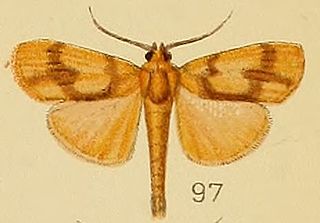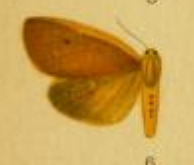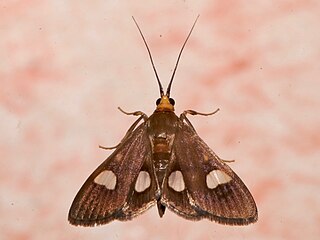
Ulopeza is a genus of moths of the family Crambidae. It was described by Philipp Christoph Zeller in 1852.

Spilosoma gynephaea is a moth in the family Erebidae. It was described by George Hampson in 1901. It is found in South Africa and Zimbabwe.
Pilocrocis cuprealis is a moth in the family Crambidae. It was described by George Hampson in 1912. It is found in Nigeria.
Pilocrocis glaucitalis is a moth in the family Crambidae. It was described by George Hampson in 1912. It is found in South Africa.
Pilocrocis melastictalis is a moth in the family Crambidae. It was described by George Hampson in 1912. It is found in South Africa and Zimbabwe.
Pilocrocis pterygodia is a moth in the family Crambidae. It was described by George Hampson in 1912. It is found in Ghana, South Africa, Uganda and Zimbabwe.
Pilocrocis reniferalis is a moth in the family Crambidae. It was described by George Hampson in 1912. It is found in Jamaica.
Sufetula bilinealis is a moth in the family Crambidae. It was described by George Hampson in 1912. It is found in Papua New Guinea.
Syllepte melanomma is a moth in the family Crambidae. It was described by George Hampson in 1912. It is found in Nigeria.
Syllepte parvipuncta is a moth in the family Crambidae. It was described by George Hampson in 1912. It is found in Ghana and Sierra Leone.
Syllepte pseudovialis is a moth in the family Crambidae. It was described by George Hampson in 1912. It is found in India, Bhutan, Sri Lanka, Borneo and Indonesia.
Syllepte retractalis is a moth in the family Crambidae. It was described by George Hampson in 1912. It is found in the Democratic Republic of the Congo, Ghana and Ivory Coast.
Syllepte attenualis is a moth in the family Crambidae. It was described by George Hampson in 1912. It is endemic to Kenya.
Syllepte disticta is a moth in the family Crambidae. It was described by George Hampson in 1912. It is found in Papua New Guinea.
Syllepte microstictalis is a moth in the family Crambidae. It was described by George Hampson in 1918. It is found in Cameroon.
Syllepte brunneiterminalis is a moth in the family Crambidae. It was described by George Hampson in 1918. It is found in Kenya and Nigeria.
Syllepte melanopalis is a moth in the family Crambidae. It was described by George Hampson in 1908. It is endemic to Mayotte in the Indian Ocean off the coast of southeast Africa.
Ulopeza denticulalis is a species of moth in the family Crambidae. It was described by George Hampson in 1912. It is found in South Africa.

Ulopeza flavicepsalis is a species of moth in the family Crambidae. It was described by George Hampson in 1912. It is found in Mali, Cameroon and the Democratic Republic of the Congo (Equateur).
Ulopeza sterictodes is a species of moth in the family Crambidae. It was described by George Hampson in 1912. It is found in Papua New Guinea.


